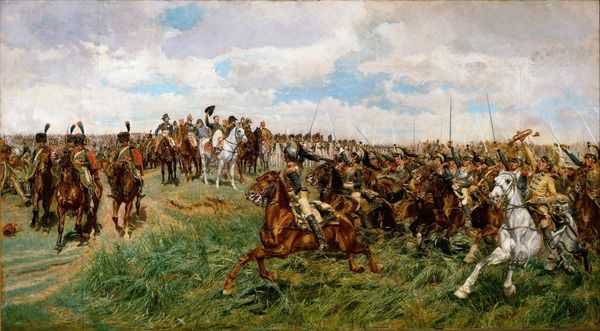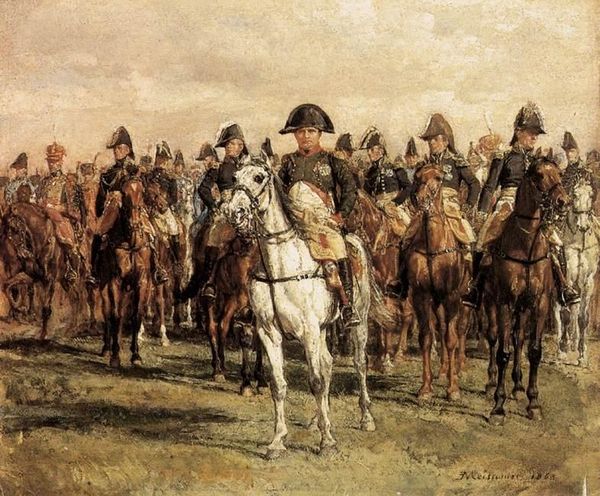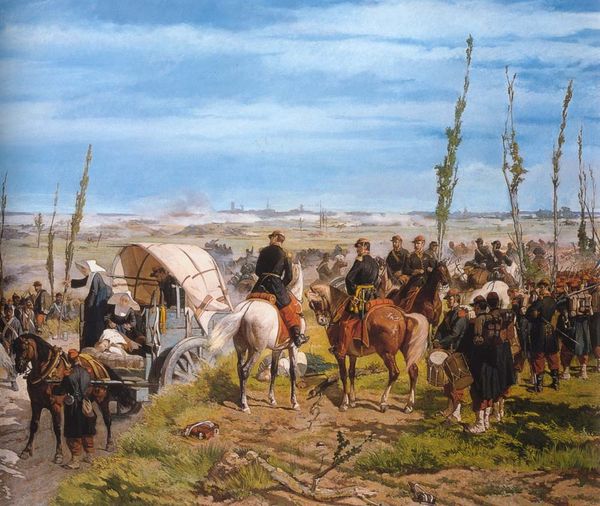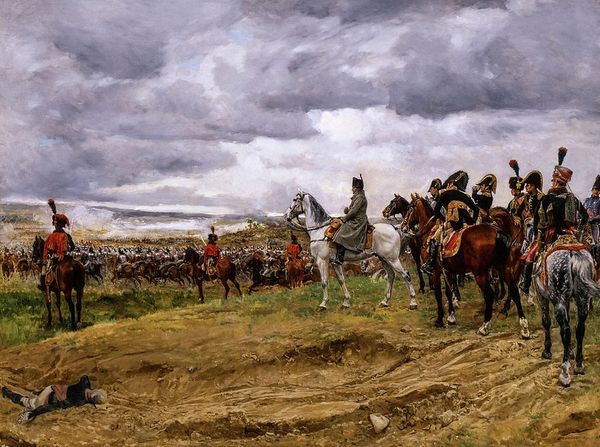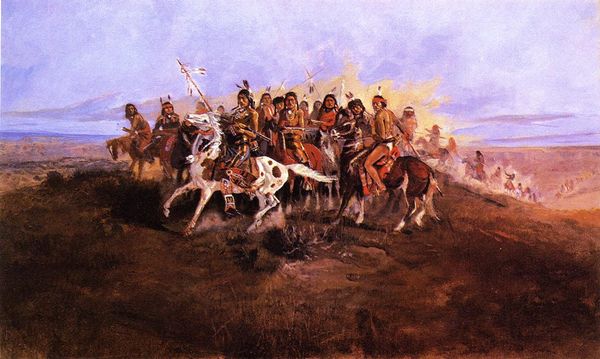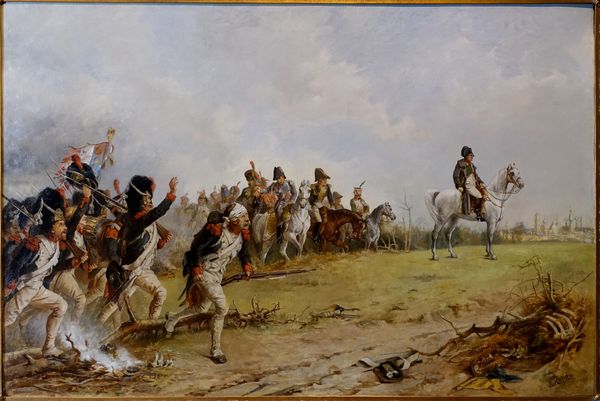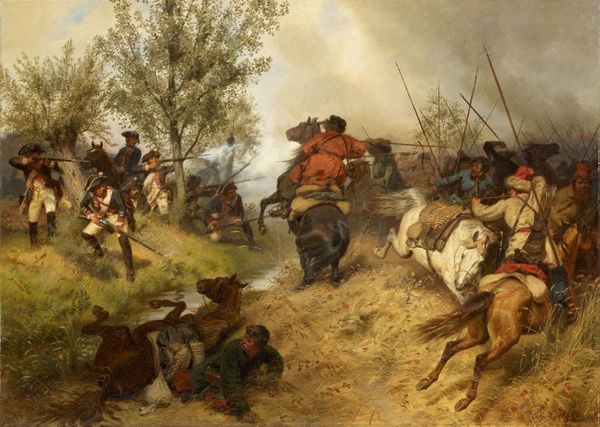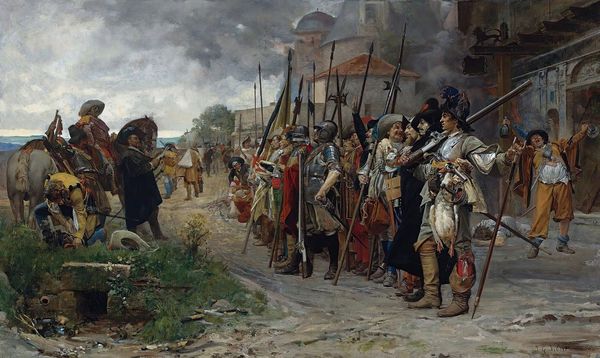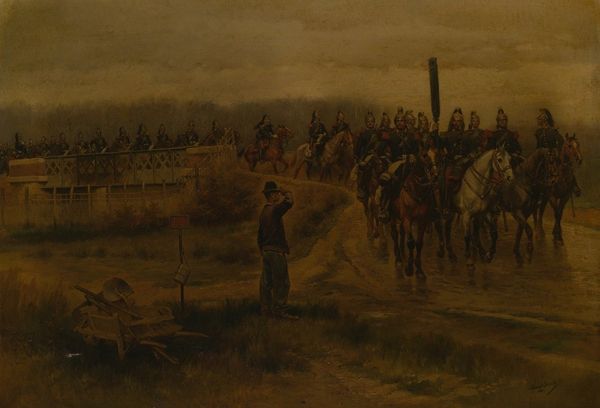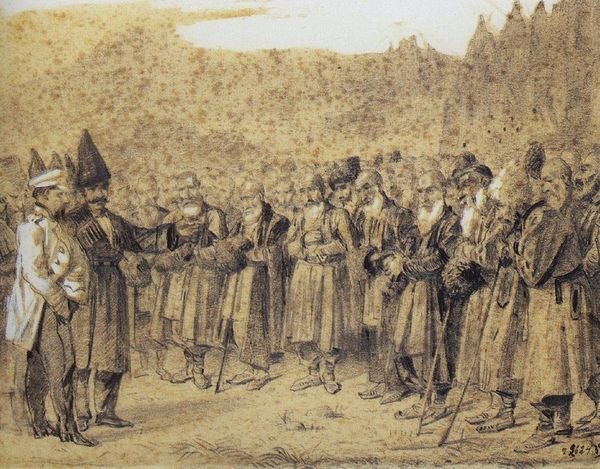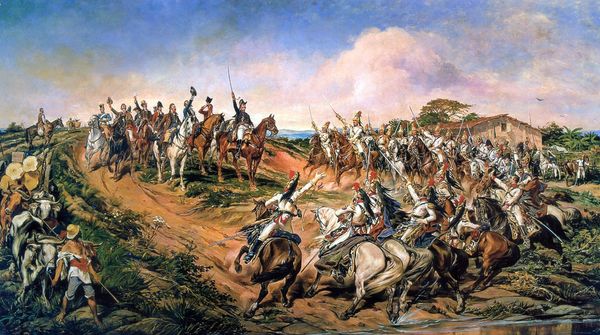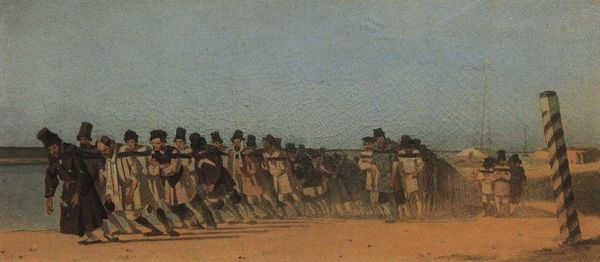
Dimensions: 100 x 265 cm
Copyright: Public domain
Curator: Welcome to Palazzo Brera, where we encounter Giovanni Fattori's “Prince Amedeo, wounded at Custoza,” an oil painting dating to 1870. Editor: It has this subdued palette, almost a sepia tone, which evokes a sense of melancholy, of weary aftermath. What can you tell me about the creation of this work? Curator: Fattori constructed this image from oil paint, laid down with clear brushstrokes, focusing on the tangible reality of this scene of war. We see the process of layering to construct form and evoke a specific materiality—dusty earth, worn uniforms. The artist deliberately sought a naturalism connected to modern life through form and substance. Editor: Visually, it recalls familiar images of warfare, evoking the Passion and its depictions of Christ carrying his cross— a similar journey, a suffering protagonist amid a procession. Curator: Yes, note that Prince Amedeo is a kind of secular icon here. Though his figure blends into the company, he represents a potent ideal. The imagery surrounding battles is replete with familiar symbolism tied to duty and self-sacrifice. Consider how uniforms and banners functioned both to solidify military labor and amplify feelings of shared belonging. Editor: What I find particularly striking is how he’s not alone but surrounded, perhaps representing collective experience rather than individual glory. Look how that wagon with its covering suggests something sheltering, protecting the injured leader. Curator: Yes, precisely, and it's also worth noting that during that era, the role of artists changed. Rather than relying solely on commission, as an artisan or maker, the artist expressed modern life in new ways through market relations. This allowed artists to select which images were considered essential to that period of great political turmoil. Editor: Ultimately, that collective vulnerability, depicted using muted earthy materials and suggestive brushwork, stays with me most. It's about loss. Curator: Indeed. A fitting elegy painted with a dedication to recording real historical incidents and the cost of empire building.
Comments
No comments
Be the first to comment and join the conversation on the ultimate creative platform.
